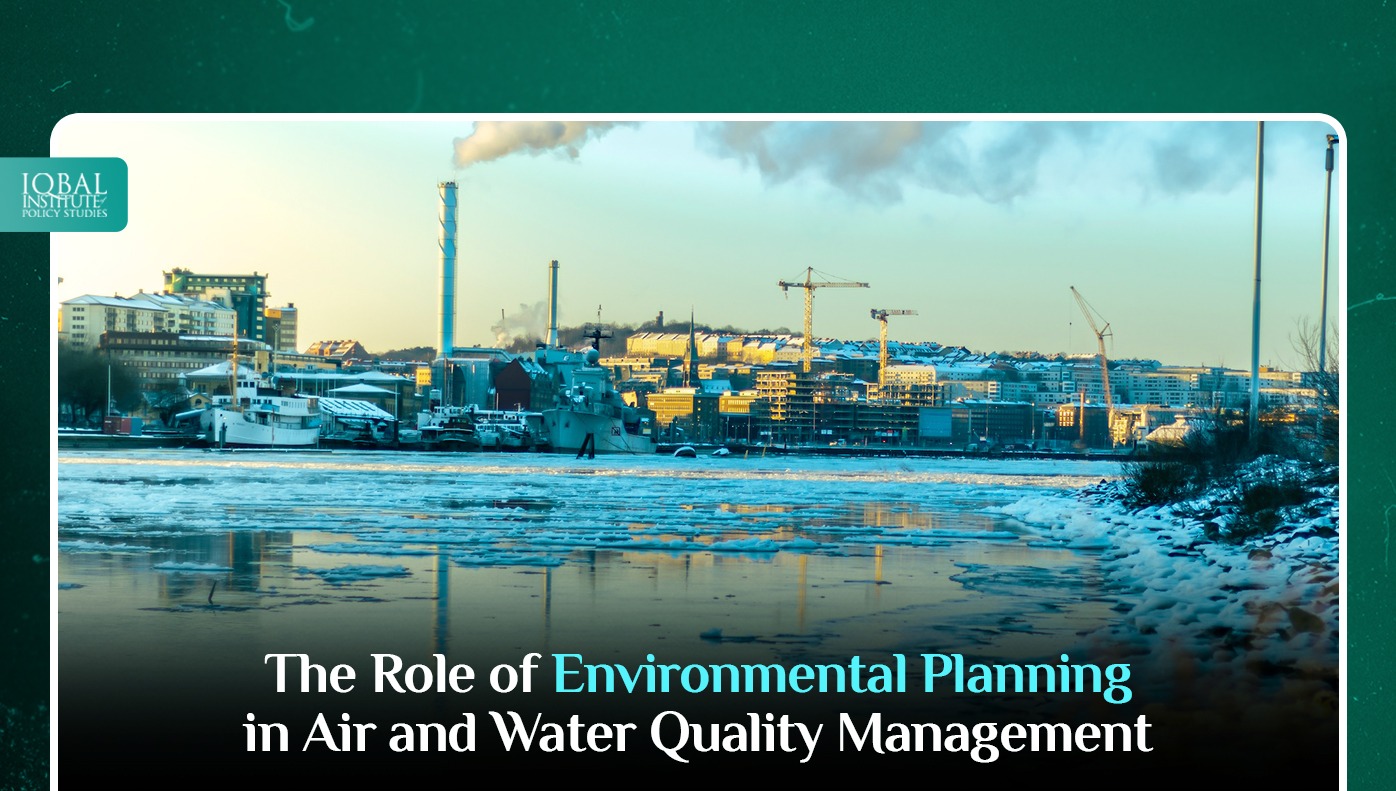Environmental planning plays a pivotal role in shaping sustainable communities and safeguarding the health of our ecosystems. Among its multifaceted responsibilities, one of the most critical aspects is managing air and water quality. As our planet grapples with the consequences of rapid urbanization and industrialization, thoughtful and strategic environmental planning becomes indispensable in mitigating the adverse effects on air and water quality. In this comprehensive blog post, we will delve into the intricacies of the role environmental planning plays in managing these essential resources, focusing on both air and water quality.
Understanding the Environmental Landscape
Air Quality Management
Air quality is a complex tapestry influenced by various factors, including industrial emissions, vehicular traffic, and natural sources. Environmental planning in the context of air quality management involves a systematic approach to understanding, monitoring, and regulating the release of pollutants into the atmosphere.
Emission Inventories and Source Identification
Environmental planners conduct exhaustive studies to create emission inventories, identifying major sources of air pollution. This step is crucial for developing targeted strategies to reduce emissions from industries, transportation, and other sectors.
Land Use Planning and Zoning
Proper land use planning helps in controlling the spatial distribution of pollution sources. Zoning regulations can ensure that industrial zones are situated away from residential areas, minimizing the exposure of communities to harmful pollutants.
Transportation Planning
Effective transportation planning is a linchpin in air quality management. Encouraging public transportation, promoting electric vehicles, and developing infrastructure that reduces traffic congestion are key components of this strategy.
Green Spaces and Urban Design
Integrating green spaces into urban planning not only enhances the aesthetic appeal of a city but also contributes to improved air quality. Trees and plants act as natural filters, absorbing pollutants and releasing oxygen.
Water Quality Management
Water, a fundamental resource for life, is susceptible to contamination from various human activities and natural processes. Environmental planning for water quality management involves measures to protect water bodies and ensure a safe and sustainable supply.
Watershed Management
Environmental planners engage in watershed management to safeguard the health of rivers, lakes, and other water bodies. This involves regulating land use practices in upstream areas to prevent soil erosion and the runoff of pollutants.
Infrastructure Planning
The design and maintenance of water treatment and distribution systems are critical aspects of water quality management. Environmental planners work to ensure that infrastructure is resilient, efficient, and capable of providing clean water to communities.
Waste Management Strategies
Proper disposal and treatment of industrial and municipal waste are vital for preventing water contamination. Environmental planners develop waste management strategies that minimize the impact of pollutants on water bodies.
Protection of Aquatic Ecosystems
Biodiversity in aquatic ecosystems contributes to water quality. Environmental planning involves the protection and restoration of wetlands, riparian zones, and other habitats that play a crucial role in maintaining water quality.
The Intersection of Air and Water Quality Planning
While air and water quality management are often treated as separate domains, their interdependence is undeniable. Certain pollutants, such as particulate matter and volatile organic compounds, can affect both air and water quality. Therefore, an integrated approach to environmental planning is essential for addressing the shared challenges these two realms present.
Cross-Sector Collaboration
Environmental planners need to foster collaboration between air and water quality management agencies. Shared data, coordinated monitoring efforts, and joint policy initiatives can lead to more effective outcomes.
Climate Change Considerations
As climate change exacerbates environmental challenges, planners must factor in the potential impacts on air and water quality. Rising temperatures, altered precipitation patterns, and extreme weather events can influence the distribution and concentration of pollutants.
Community Engagement
Successful environmental planning requires the active involvement of communities. Educating the public about the importance of air and water quality, and involving them in decision-making processes, fosters a sense of responsibility and collective action.
Challenges and Future Directions
Despite the strides made in environmental planning for air and water quality management, several challenges persist. Rapid urbanization, industrial expansion, and the global nature of environmental issues pose ongoing threats. Moreover, emerging contaminants and the uncertainties associated with climate change add layers of complexity to the planning process.
Technological Innovations
Harnessing the power of technology is crucial for advancing environmental planning. Remote sensing, data analytics, and artificial intelligence can enhance monitoring capabilities and provide valuable insights for decision-makers.
Policy Integration
Governments and regulatory bodies must integrate air and water quality considerations into overarching environmental policies. A holistic approach that addresses multiple environmental factors will be more effective in achieving sustainable outcomes.
International Cooperation
Given the transboundary nature of air and water quality issues, international cooperation is imperative. Shared research initiatives, data exchange programs, and collaborative policy frameworks can amplify the impact of environmental planning efforts.
Public Awareness and Advocacy
Environmental planners must work to raise public awareness about the importance of air and water quality. Advocacy campaigns, educational programs, and community outreach can mobilize support for sustainable practices and policies.
Conclusion
In conclusion, the role of environmental planning in air and water quality management is pivotal for ensuring the well-being of current and future generations. By adopting a comprehensive and integrated approach, environmental planners can navigate the complexities of managing these precious resources. Through strategic land use planning, pollution control measures, and community engagement, we can strive towards a future where clean air and water are not just aspirations but fundamental rights for all. As we continue to grapple with environmental challenges, the significance of thoughtful and proactive environmental planning cannot be overstated.
This article is written by Radma Nouman. Radma is a research analyst at the Iqbal Institute of Policy Studies (IIPS).



Leave a Reply